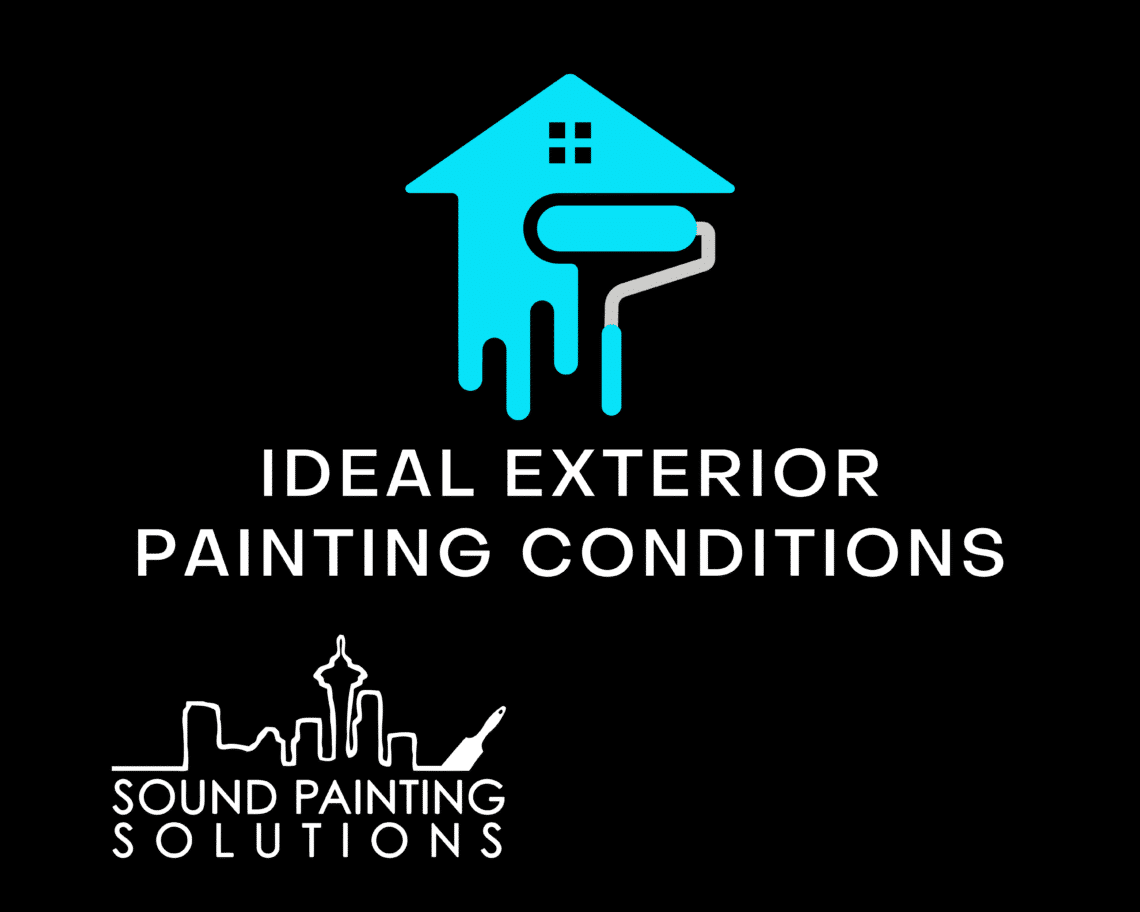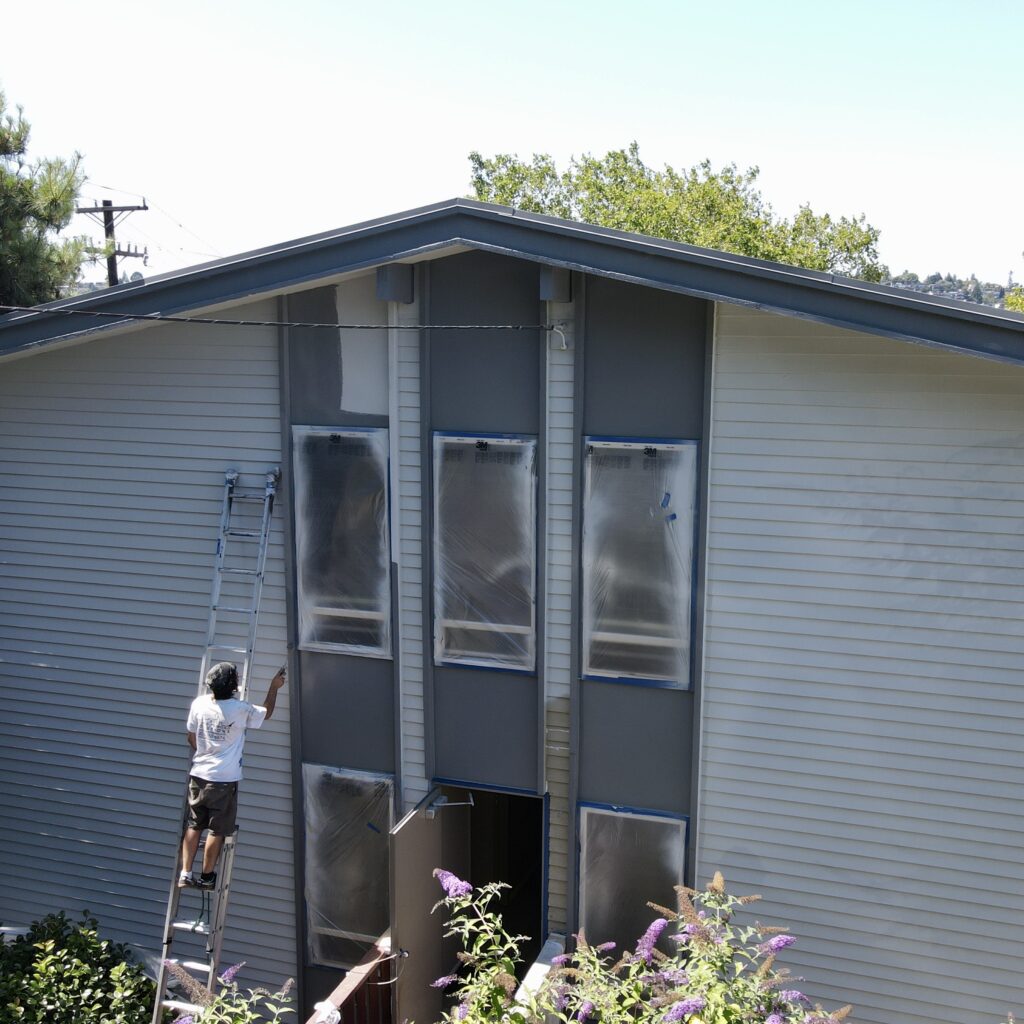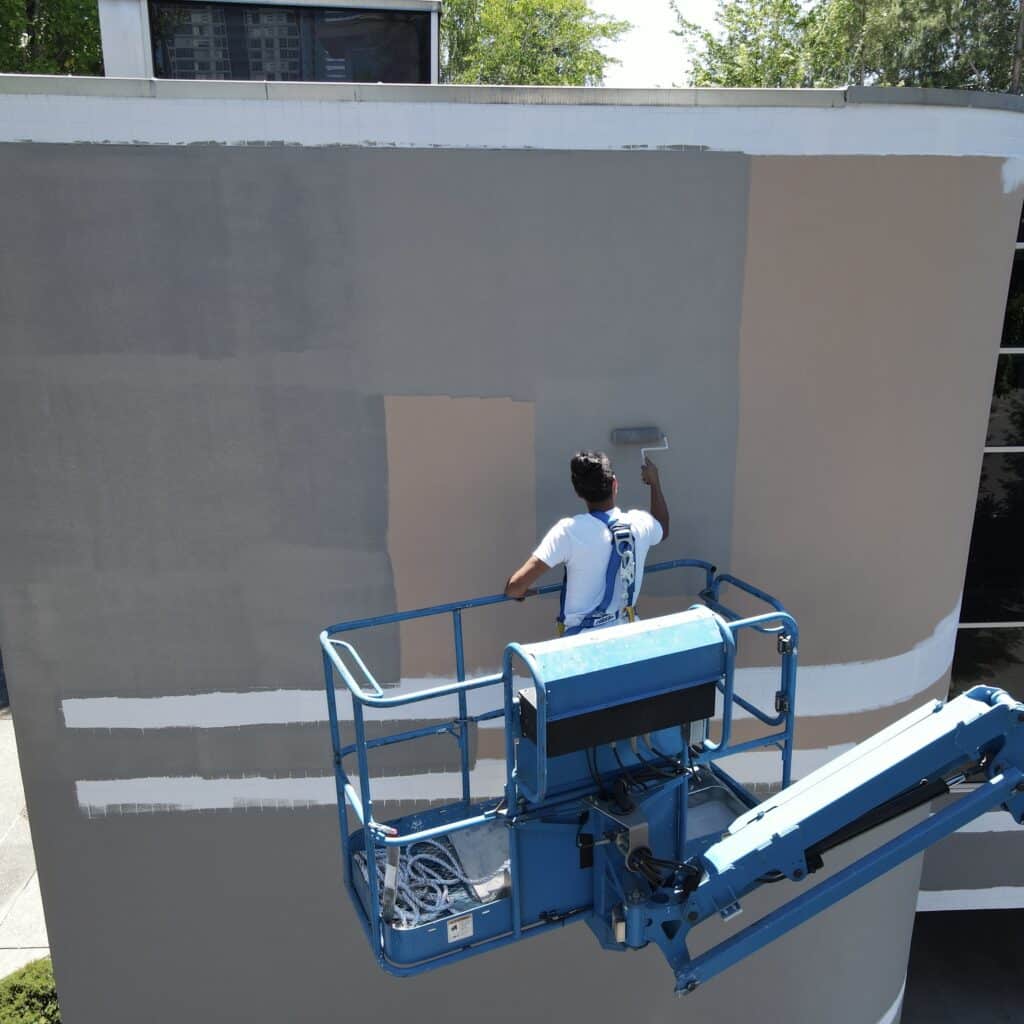(206) 258-6676

Seattle Exterior Painting Conditions
Ideal weather conditions are crucial for achieving a durable, long-lasting exterior paint job. The climate in our market of the Seattle area can be challenging to navigate at certain points in the year when it comes to completing exterior painting projects. For our company, the exterior painting season can begin as early as March and go until Mid-October. After taking various factors into consideration, you can ensure your project will be a success.
Rain
It’s not recommended to paint outside at all when it is raining. The rain causes various problems when painting. The moisture from the rain can prevent the paint from adhering properly to the substrate causing it to peel or flake. In addition if the precipitation mixes with the paint prior to applying, there is a possibility of the color to be altered, thus reducing the ability to cover the surface. Also if the surface is not completely dry before painting, the moisture under the paint can create mildew and mold growth leading to discoloration and damaged paint. It’s recommended to pause the painting project while it rains and resume when the surface feels dry to the touch.
Depending on various factors like direct sunlight and temperature, this time period can range from a few hours to an entire day. In general, exterior paint can handle some rain after it dries for 2 – 4 hours. The best way to fix issues like peeling or bubbling from rain is to first scrape or sand off the affected area. The next step is to clean the surface and ensure it is dry before proceeding. Lastly apply a primer coat and two coats of the appropriate paint product to the surface.
Temperature
The outside temperature can have an impact on exterior painting. The ideal temperature range is between 50 and 90 degrees Fahrenheit. The temperature affects how the paint adheres to the exterior surface. If it’s too hot, the paint can dry too fast, not allowing enough time for proper adhesion resulting in cracking, peeling, and bubbling. These problems will create a rough and not visually appealing finish. If it’s too cold, the paint may not dry at all or take a long time to dry, leading to poor adhesion.
When it’s cold, the long drying time can lead to dirt and debris sticking to the wet paint, ruining the finish. It’s important to check the manufacturer’s recommendations for the ideal temperature range when selecting a product for exterior painting. Ensuring the contractor you hire for the project is painting in the appropriate temperature range will ensure the paint adheres correctly, dries evenly, and performs as expected leading to a high quality finish.


Wind and Smoke
Wind can negatively impact exterior painting for a few reasons. Strong wind can cause overspray resulting in an uneven application and paint getting on areas it shouldn’t. Wind can also cause dirt and debris to fly and hit the wet paint ultimately ruining the finished product. In the Seattle area, we have experienced times where the air quality has impacted our ability to paint. When air quality reaches hazardous levels, we pause the exterior project and resume when it is safe for our painters.
Recommendation
When hiring a contractor for your project, we encourage you to ask questions regarding the conditions they will paint. It’s important to know the factors that can cause problems for the paint so that you are informed. When there is unexpected rain in the summer months we have the ability to pressure wash instead, and also do preparation and painting for surfaces under cover. We also can do some smaller size interior projects for our flexible customers. If you’re in the Seattle area and looking to get an exterior project completed this season, please fill out a free quote form! Thanks for reading.
